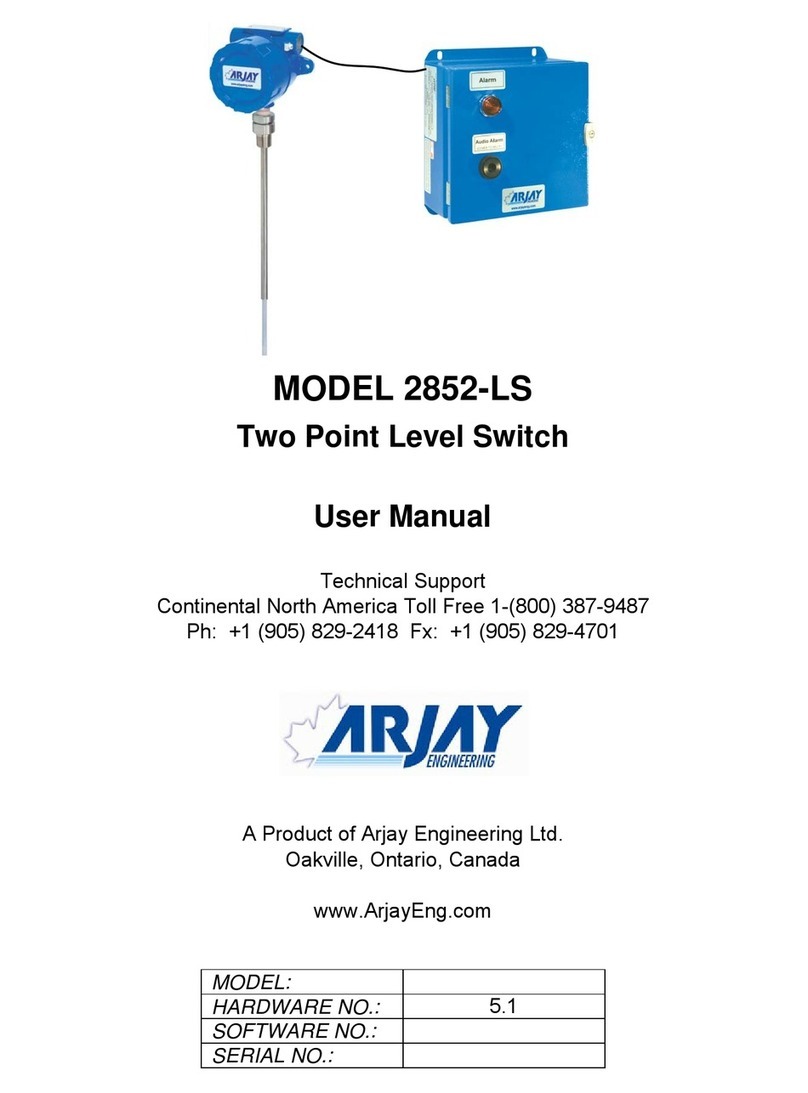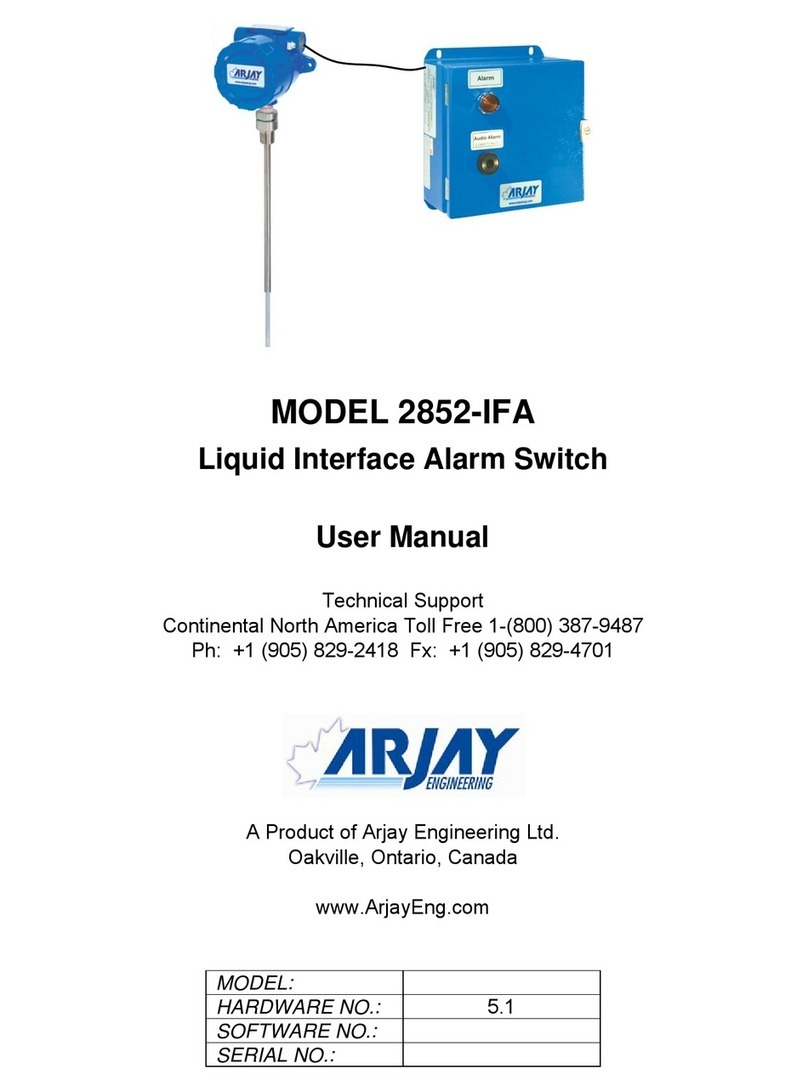
Model: 2852-FCS User Manual Rev: 1.0
3
1.0 INSTRUMENT OVERVIEW
The Arjay Model 2852-FCS Foam Control Switch provides two independent alarm relays for
monitoring and control of foam in tanks, sumps and vessels.
The Arjay system has an active capacitance probe that is inserted into the vessel. As the foam
level approaches or changes around the probe, the capacitance reading of the probe increases or
decreases. The controller relays are calibrated to alarm at user determined levels of product on
the probe.
The remote mounted Arjay 2852 controller monitors the capacitance change of the probe and
activates the relay contacts for use with alarms, pumps, valves, etc.
The complete 2852-FCS system consists of the probe, the PMC card, and the 2852 controller.
The standard probe is constructed of a Teflon coated SS rod. The PMC card is mounted in a
junction box mounted on top of the probe. The PMC card translates the capacitance signal from
the probe into a frequency pulse, which is then transmitted up to one kilometer to the 2852
controller via 2-wire shielded cable.
Probes can be inserted vertically, horizontally, or angled into the tank. The sensor does not
differentiate between liquid and foam. This system is designed to alarm for foam presence in a
normal air condition.
On vertical and angled probes, the two relays can be set at the same or different levels. Each relay
also has a differential setpoint to allow the relay to activate at one level and de-activate at a
different level. This is similar to a latching format which can cycle a valve or control action between
two points through the use of only one relay. For example, the defoamer spray can be activated at
a high point and held on until the foam reaches a desired lower point.
On a horizontal insertion, both relays are calibrated to the same setpoint.
For single point high foam level applications, it is typical for both relays to be calibrated without
bringing the foam level up to a specific alarm point. For example, in a high alarm application, the
controller can be calibrated to air. An alarm will occur when the foam approaches and begins to
cover the probe.
This model is intended for use in General Purpose non-hazardous areas. For hazardous
location use refer to Arjay Engineering Ltd. for the appropriate model.
1.1 Features
Microprocessor based capacitance Controller
Relay and 4/20mA alarm output
Modbus protocol via RS-485 for access by Arjay handheld, Central Access Panel or
compatible system
Local Auto calibration or remote calibration via network
User specified custom features may be added by contacting Arjay Engineering Ltd.
1.2 Model Number vs. Voltage Input
2852-FCS-1 100-240 VAC power input
2852-FCS-3 12 VDC power input
2852-FCS-4 24 VDC power input






























